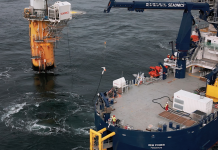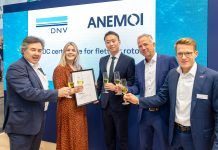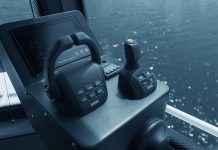Airborne Wind Energy (AWE) is accelerating toward commercialization as two leading technology developers attract major global investment through crowdfunding initiatives, Airborne Wind Europe (AWE) reported.
The Brussels-based trade body said latest funding rounds from EnerKite and Kitemill have attracted a combined 2 million euros with more than 1,000 investors globally.

Kitemill recently unveiled designs for its first commercial scale KM2 system capable of taking AWE to utility-scale. The technology is set to feature in the 7.5 million euro Norse Airborne Wind Energy Project (NAWEP), backed by the EU Innovation Fund, with a total of 12 KM2 units due for installation.
“We are thrilled to see two of our leading AWE technology members attracting large levels of international attention,” said Secretary General Kristian Petrick. “AWE is about to become a game-changing solution unlocking large untapped wind resource at high altitudes enabling more energy to be extracted at lower carbon intensity and eventually at lower cost. We are inviting other potential investors to join this journey right now as we aim to help Europe and other areas of the world accelerate net-zero electricity production and security of supply.”
A recent white paper conducted by BVG Associates, on behalf of Airborne Wind Europe, projected the AWE market to reach around $100 billion (92.39 billion euros) by 2035-2040 and several hundreds of billions soon after. Based on the assumption that AWE follows the same trend as the established wind turbine market 40 years ago, BVG further estimates the cumulative global deployment of AWE could reach 5 GW by 2035 and at least 177 GW by 2050.
New and disruptive AWE technology offers unique benefits compared to traditional wind-energy systems. Research indicates that harvestable high-altitude wind power is about 4.5 times stronger than ground level resources. AWE also allows for continuous adjustment of harvesting altitude seeking the best available wind resource. This high-capacity factor ensures a more consistent and stable energy supply alleviating intermittency issues experienced by more established renewables, and supporting future hybrid energy models.
In addition, AWE substantially reduces material consumption by up to 90 percent. This has a positive impact on overall costs, manufacturing, transport, and logistics operations, as well as the carbon footprint and environmental impact.
Another strong benefit is the versatility of AWE technology. Being scalable from a few kilowatt to several megawatt, the systems are suitable for a broad range of markets including offshore repowering, floating offshore, mountainous and remote locations.
“AWE technology has potential to drive down the levelized costs of wind energy (LCOE), through a decrease in capital costs (CAPEX) due to low material use, combined with increased capacity factor, easier logistics and quick set-up as well as the high-power density per square-kilometre,” Petrik said. “The first commercial AWE systems are already competitive in markets with diesel-based power generation, with experts estimating AWE will reach parity with established onshore wind by the mid-2030s,” said Petrik.
More info airbornewindeurope.org



























